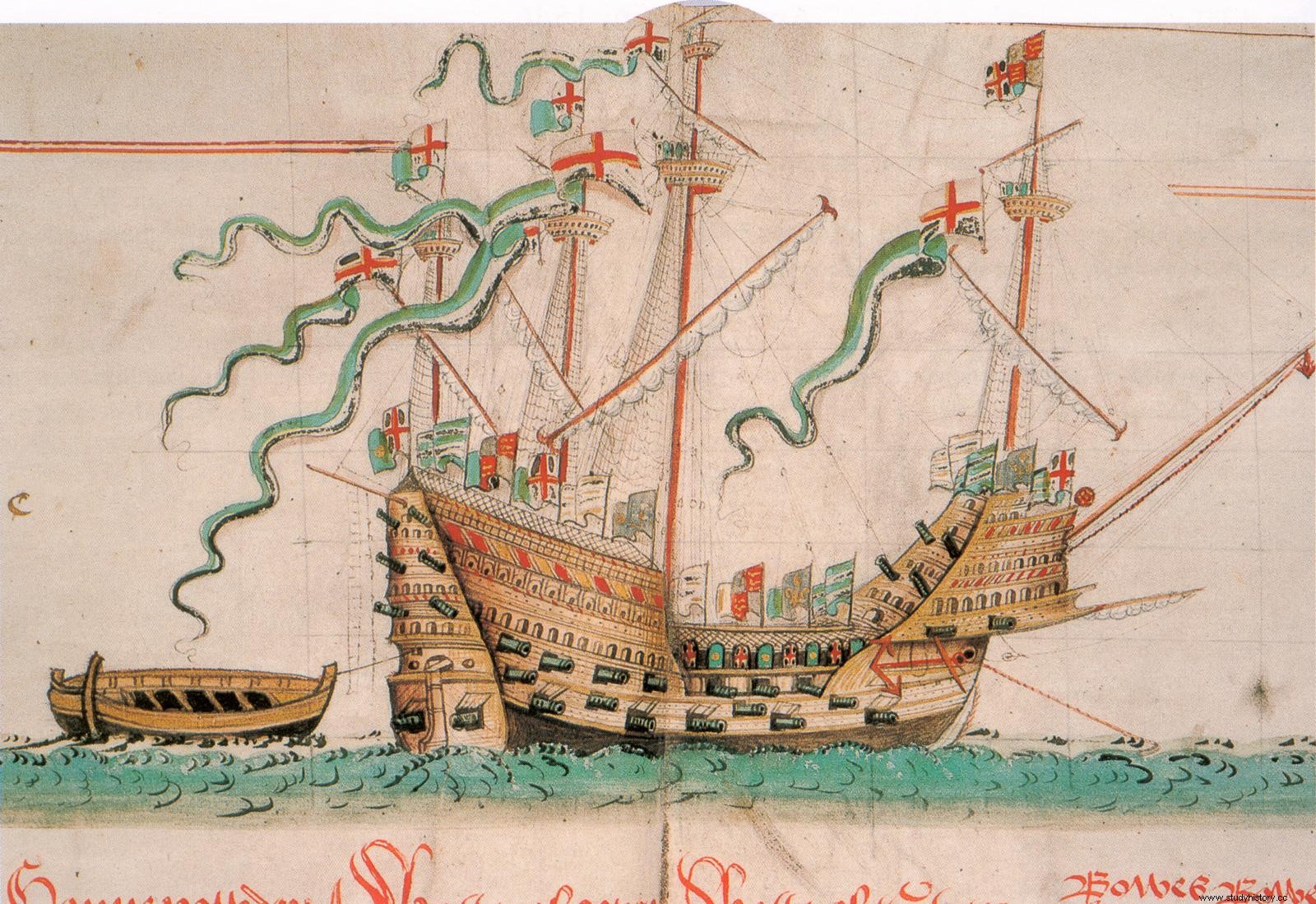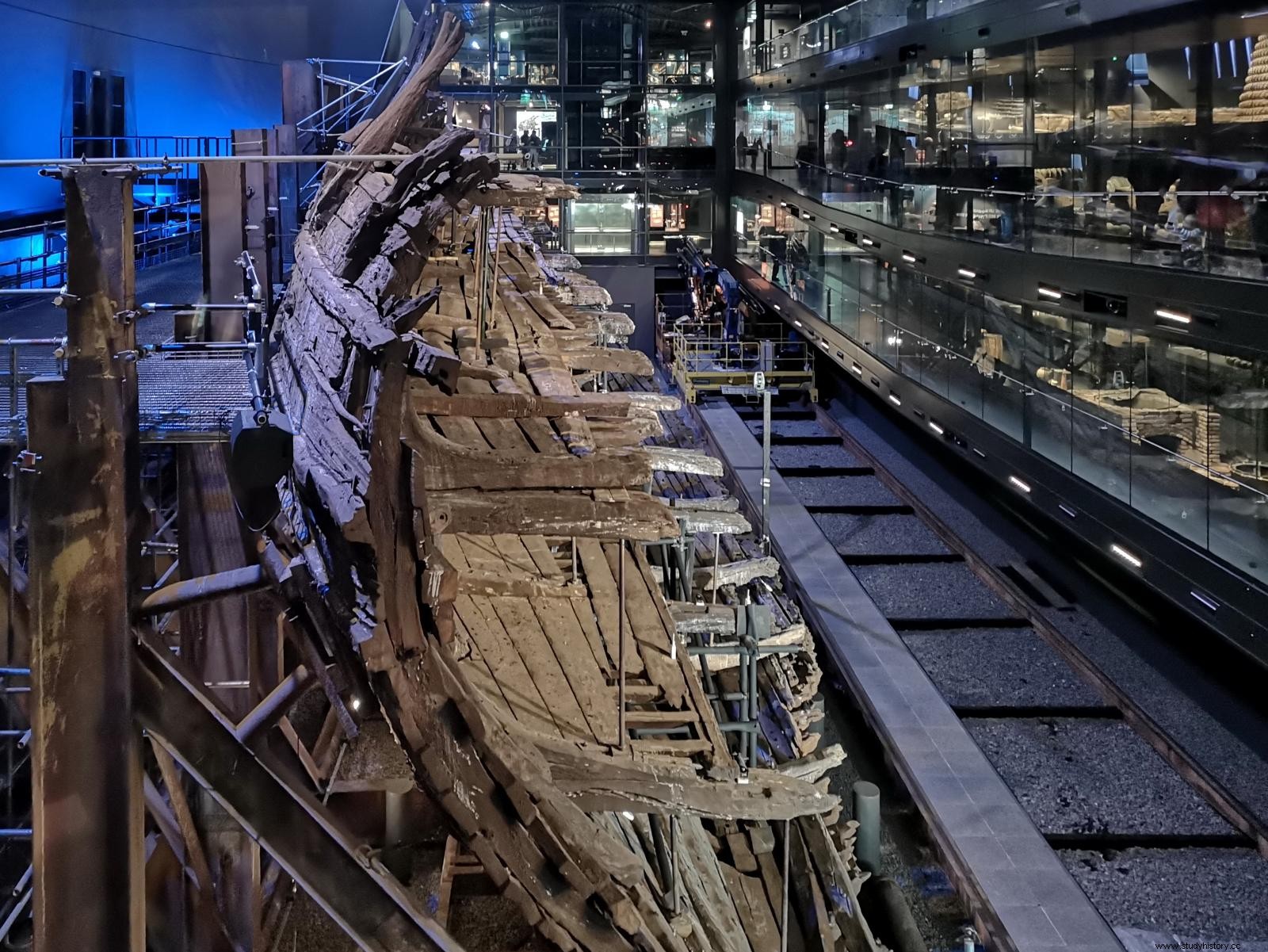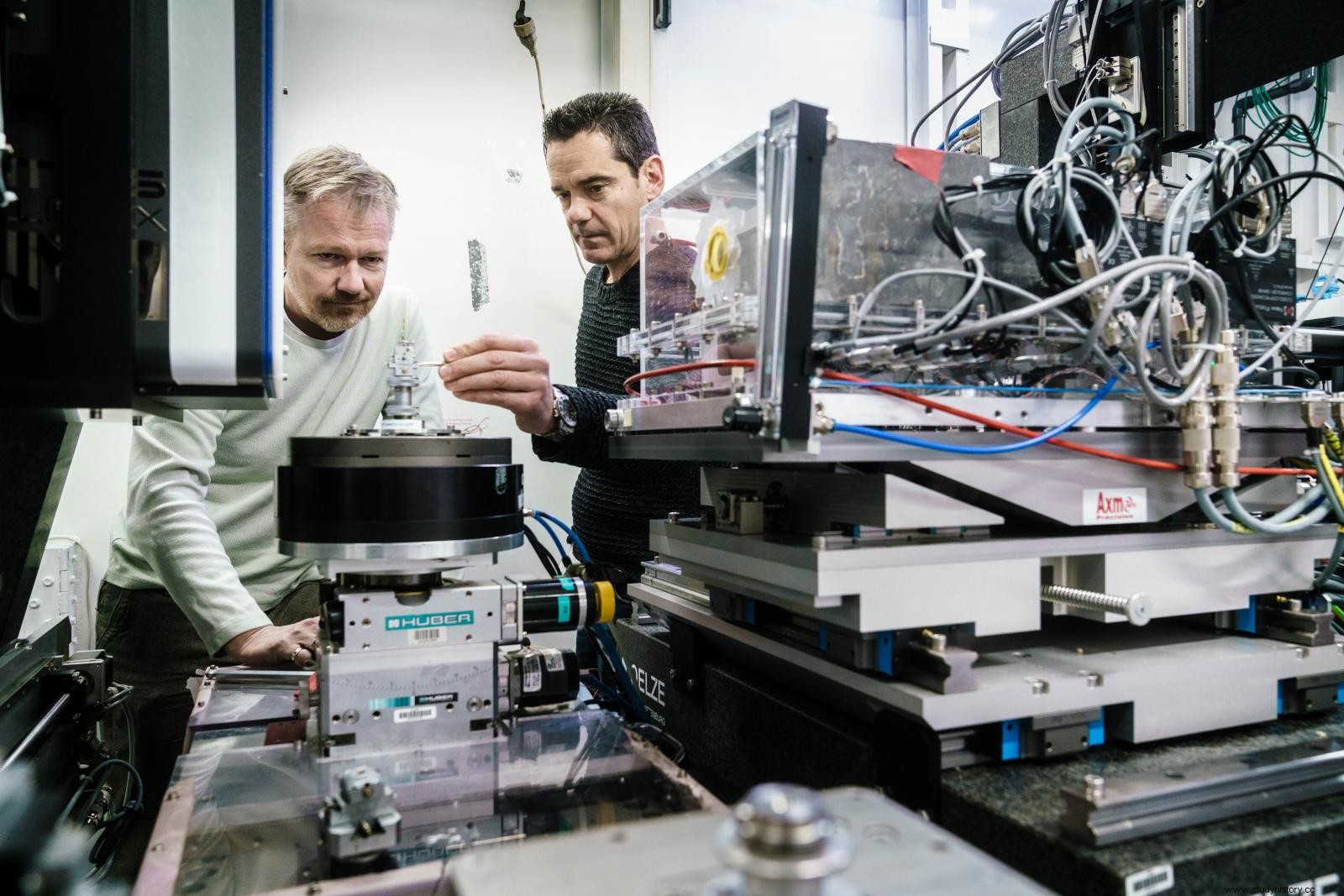Extracted in 1982 from the bottom of the English Channel, the wreck of the Mary-Rose, jewel of the fleet of the crown of England and Ireland sunk in the 16th century, is dying despite the care that is constantly given to it. But new findings from X-ray tomography - a heritage first - could help develop a treatment for the bacteria eating away at it.

The wreck of the Mary-Rose as it is displayed today in the Mary Rose Museum, Portsmouth, a town which faces the location where she sank in 1545 and was recovered over 400 years later. /P>
On July 19, 1545, after thirty-three years of good and loyal service, the Mary-Rose, a Royal Navy battle carrack, sank opposite Southsea Castle, in the arm of the English Channel separating the Isle of Wight from the rest from England. Under the horrified eyes of Henry VIII, who witnessed the disaster from the fortress, she took with her into the depths of the Solent almost all of her crew, a large part of whom were killed by the fall of the equipment on board. If the reason for the sinking is still debated today - was the ship sunk by the French galleys, against which she was leading the battle, or following a bad maneuver by the crew? -, he left for sure a bitter memory to the most sulphurous sovereign of the Tudors:the Mary-Rose was his favorite boat. 
The only contemporary depiction of the Mary-Rose by Anthony Roll, who cataloged Navy ships in 1514. Credits:Courtesy of ESFR and The Mary Rose Trust.
Henry VIII might have been happy to learn that four centuries later, in 1982, experts were going to pull the Mary-Rose out of the water and exhibit it majestically in an eponymous museum, located in the city. of Portsmouth. In a fantastic state of preservation for its advanced age, the one that is nicknamed the "English Pompeii" for the thousands of objects of the 16th century that it delivered, nevertheless since its repatriation to the mainland requires unremitting attention. Over the past forty years, scientists have continued to provide it with conservation treatments, between sprinkling recycled fresh water (continuously for ten years!) and successive applications of polyethylene glycol (PEG), a compound that stabilizes the waterlogged wood and prevent it from shrinking when it dries. Despite these precautions, the acids resulting from the oxidation and degradation of the chemical species present in the wood continue to eat away at the Mary-Rose in small fires. So is Britain's most famous shipwreck doomed to inevitable death? Maybe not.
A "Google Map" of bacteria
October 27, 2021 in Cell magazine , a team of multidisciplinary researchers, including historians, physicists and even chemists from the Universities of Copenhagen, Columbia and the European Synchrotron Radiation Facility in Grenoble (ESRF), reported that an in-depth analysis of the shell carried out in 2020 at the ESRF could effectively counter its deterioration. Using multi-resolution X-ray tomography imaging, a technique of shining a thin beam of very high intensity X-rays generated in a particle accelerator, the experts were able to determine that the wood was full of nanoparticles containing zinc which had contributed to its deterioration for all these years. "Until now, we did not know precisely what these chemical species were or where they were on the wreckage", explains to Sciences et Avenir Simon Billinge, materials physicist at Columbia University and co-author of the paper.

The hull of the Mary-Rose as it is displayed at the Mary Rose Museum in Portsmouth, a coastal city in southern England. Credits:Mary Rose Trust
During its long immersion, the wreckage of the ship was arranged so that one of its parts protruded from the surface of the seabed while another remained buried in the mud. It is this second part, which escaped for lack of oxygen from the organisms working on the carbon energy cycle, which could reach us. "But we found that anaerobic bacteria (for whom the air is toxic, Editor's note)leaved nanoparticles of zinc sulphide, sometimes with a little incorporated iron", continues Simon Billinge. This is essential data for understanding the processes that started as soon as the wood once again came into contact with oxygen. Using tomography, Simon Billinge and the other team members were then able to map the location of the bacteria colonies based on where they left these deposits. "This kind of allowed us to create a tiny 'Google map' of bacterial cities" , compares the researcher.
Serial rescue attempts
Many were the attempts to salvage the Mary-Rose, the first only a few days after the sinking. But the angle of inclination of the ship and the thickness of the clay seabed made the operations futile each time. Finally, the Mary-Rose was abandoned where she had sunk, and sailed only in the memories. According to period texts, until the 17th century the wreck could be seen pointing out of the water when the tide was low.
First rediscovered by divers in the mid-19th century, who unfortunately damaged it, it was not actually excavated by archaeologists until 1971, after its location was identified. During the following decade, more than 500 divers and researchers explored the ship, removing one by one the thousands of objects it contained:navigation tools, weapons, barrels, musical instruments and medicine. In 1982, finally, a team of experts carried out a final and perilous rescue operation which is still one of the most expensive and ambitious in the history of maritime archeology. The hull of the ship, half of which was still intact, was lifted and recovered to be placed in dry dock. The hardest part would then begin:ensuring that the wood did not crumble into dust from its cozy bath of mud and salt.
Magnet or stabilizer mixture
If the wood today is too dry to support any xylophagous bacterial life, these tiny deposits of zinc sulphide continue to react chemically to the air and ambient humidity, even when controlled. "Acids attack wood and cause structural damage the way we know" , explains Gavin Vaughan, a materials specialist at the ESRF who worked on samples from the ship at the Grenoble synchrotron. "And that's not all:we were surprised to learn that the polyethylene glycol itself, supposed to act as a stabilizer, was starting to react with the wood. It breaks down and forms acids that threaten in turn the mechanical integrity of the hull." After zinc nanoparticles, here is a new enemy not to take your eyes off.

Gavin Vaughan, left, and Marco Di Michiel, right, ESRF physicists who worked on the Mary-Rose samples. Credit:Cande/E FRS
Now, researchers have the cards in hand to stop the ship's degradation. "Now that we understand its current state - both structural and chemical - we can develop different conservation strategies" , says Eleanor Schofield, chemist and head of conservation and collections at the Mary-Rose. One of them is based on the fact that the iron present in many particles makes them magnetic. "We can imagine a magnet to extract them from the wood" , details Gavin Vaughan. But assures him that he has more hope of finding "a compound that would stabilize the whole thing" .
A new path for heritage research
At the same time, the analysis at the ESRF has uncovered some curiosities:traces of lead and gold whose origin has not yet been determined with certainty. For the researchers, these could have appeared much later, during the Second World War, when the arsenal of Portsmouth was the target of intensive bombardments which, as we know, deposited lead, mercury or even cadmium in the waters of the Solent. They too will have to be taken into account for the future conservation of the wreck. In general, the data collected through X-rays should be decisive in the hope of preserving any remains linked to the Mary-Rose for as long as possible:artefacts in brick, leather or even textiles, which have never been seen before. object of an in-depth chemical study.
"I believe it is safe to say that our conclusions are relevant to many other similar projects around the world, both in terms of the information collected on the different particles and the use of X-ray tomography on the cultural heritage, which was a first here" , concludes Eleanor Schofield. Impossible then not to have a thought for the wreck of the Titanic, which, also attacked by bacteria, could disappear within the next twenty years only...
